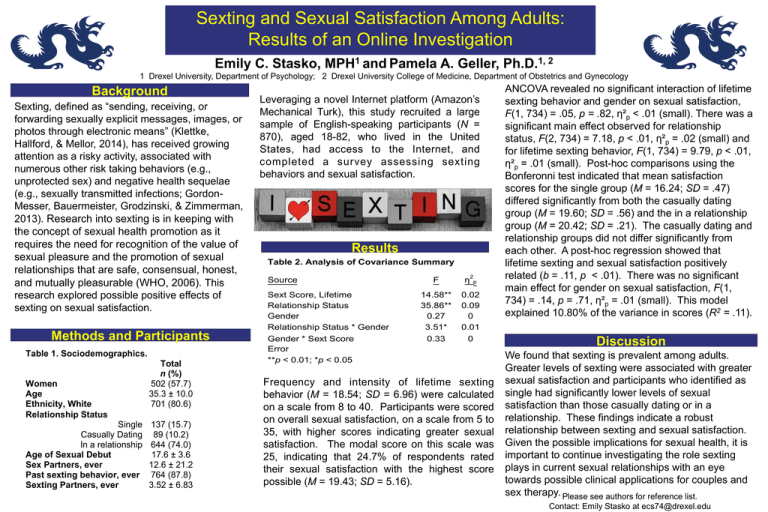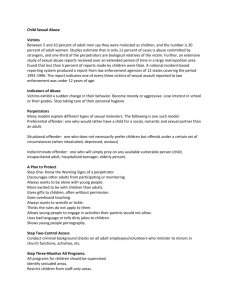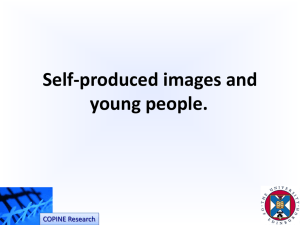
Sexting and Sexual Satisfaction Among Adults:
Results of an Online Investigation
Emily C. Stasko,
1
MPH and Pamela
A. Geller,
1,
2
Ph.D.
1 Drexel University, Department of Psychology; 2 Drexel University College of Medicine, Department of Obstetrics and Gynecology
Background
Sexting, defined as “sending, receiving, or
forwarding sexually explicit messages, images, or
photos through electronic means” (Klettke,
Hallford, & Mellor, 2014), has received growing
attention as a risky activity, associated with
numerous other risk taking behaviors (e.g.,
unprotected sex) and negative health sequelae
(e.g., sexually transmitted infections; GordonMesser, Bauermeister, Grodzinski, & Zimmerman,
2013). Research into sexting is in keeping with
the concept of sexual health promotion as it
requires the need for recognition of the value of
sexual pleasure and the promotion of sexual
relationships that are safe, consensual, honest,
and mutually pleasurable (WHO, 2006). This
research explored possible positive effects of
sexting on sexual satisfaction.
Methods and Participants
Table 1. Sociodemographics.
Women
Age
Ethnicity, White
Relationship Status
Single
Casually Dating
In a relationship
Age of Sexual Debut
Sex Partners, ever
Past sexting behavior, ever
Sexting Partners, ever
Total
n (%)
502 (57.7)
35.3 ± 10.0
701 (80.6)
137 (15.7)
89 (10.2)
644 (74.0)
17.6 ± 3.6
12.6 ± 21.2
764 (87.8)
3.52 ± 6.83
Leveraging a novel Internet platform (Amazon’s
Mechanical Turk), this study recruited a large
sample of English-speaking participants (N =
870), aged 18-82, who lived in the United
States, had access to the Internet, and
completed a survey assessing sexting
behaviors and sexual satisfaction.
Results
Table 2. Analysis of Covariance Summary
Source
Sext Score, Lifetime
Relationship Status
Gender
Relationship Status * Gender
Gender * Sext Score
Error
**p < 0.01; *p < 0.05
F
η 2p
14.58**
35.86**
0.27
3.51*
0.02
0.09
0
0.01
0.33
0
Frequency and intensity of lifetime sexting
behavior (M = 18.54; SD = 6.96) were calculated
on a scale from 8 to 40. Participants were scored
on overall sexual satisfaction, on a scale from 5 to
35, with higher scores indicating greater sexual
satisfaction. The modal score on this scale was
25, indicating that 24.7% of respondents rated
their sexual satisfaction with the highest score
possible (M = 19.43; SD = 5.16).
ANCOVA revealed no significant interaction of lifetime
sexting behavior and gender on sexual satisfaction,
F(1, 734) = .05, p = .82, η²p < .01 (small). There was a
significant main effect observed for relationship
status, F(2, 734) = 7.18, p < .01, η²p = .02 (small) and
for lifetime sexting behavior, F(1, 734) = 9.79, p < .01,
η²p = .01 (small). Post-hoc comparisons using the
Bonferonni test indicated that mean satisfaction
scores for the single group (M = 16.24; SD = .47)
differed significantly from both the casually dating
group (M = 19.60; SD = .56) and the in a relationship
group (M = 20.42; SD = .21). The casually dating and
relationship groups did not differ significantly from
each other. A post-hoc regression showed that
lifetime sexting and sexual satisfaction positively
related (b = .11, p < .01). There was no significant
main effect for gender on sexual satisfaction, F(1,
734) = .14, p = .71, η²p = .01 (small). This model
explained 10.80% of the variance in scores (R2 = .11).
Discussion
We found that sexting is prevalent among adults.
Greater levels of sexting were associated with greater
sexual satisfaction and participants who identified as
single had significantly lower levels of sexual
satisfaction than those casually dating or in a
relationship. These findings indicate a robust
relationship between sexting and sexual satisfaction.
Given the possible implications for sexual health, it is
important to continue investigating the role sexting
plays in current sexual relationships with an eye
towards possible clinical applications for couples and
sex therapy. Please see authors for reference list.
Contact: Emily Stasko at ecs74@drexel.edu






